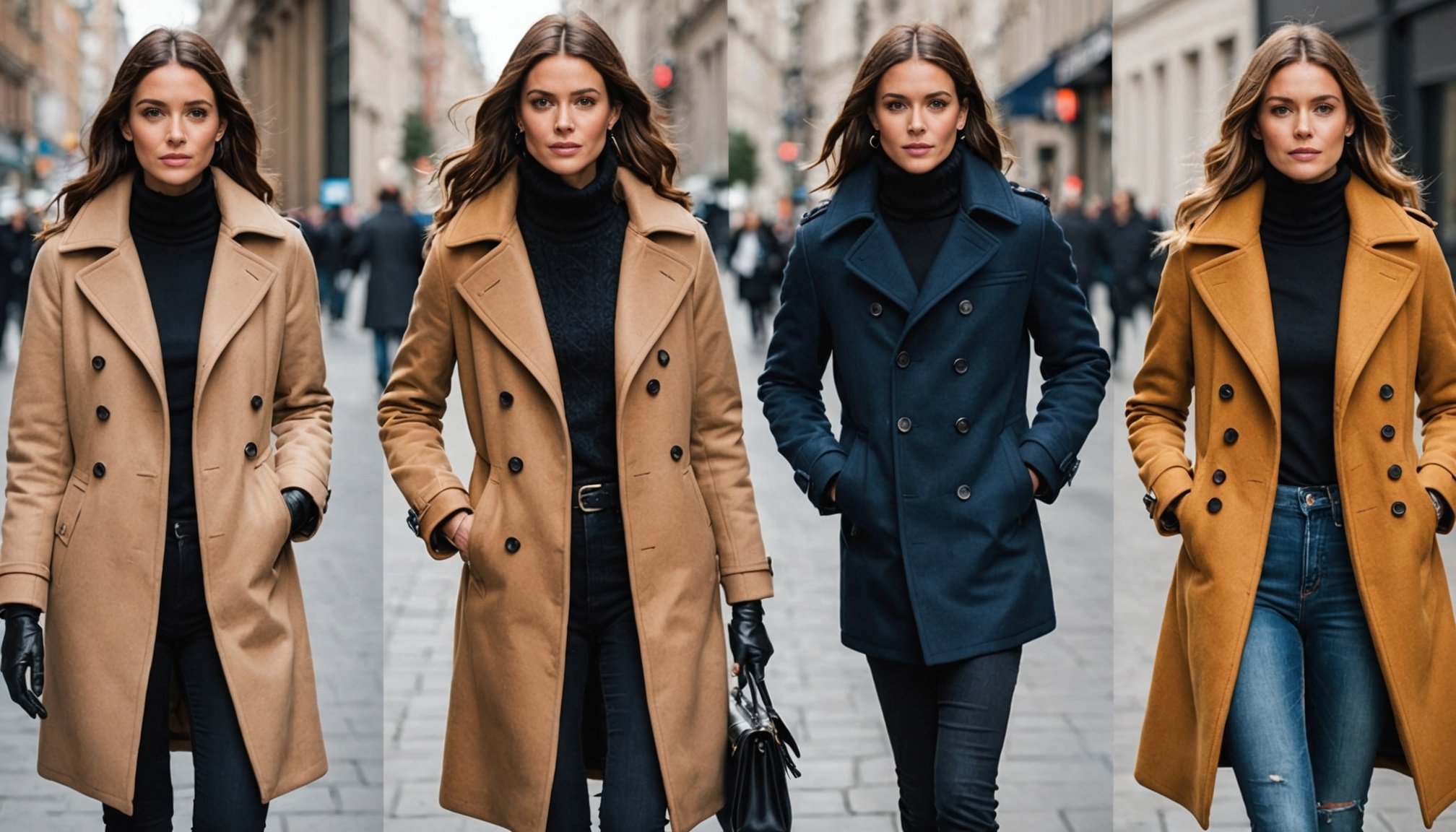Understanding Insulation Types
When choosing a winter coat, understanding the variety of insulation types available is paramount. The two primary insulation options include down insulation and synthetic insulation. Each type offers distinct advantages and disadvantages, making it essential to select the one that best suits your needs.
Down insulation, often praised for its excellent warmth-to-weight ratio, is lightweight and compressible, providing superior warmth during the colder months. However, it has notable downsides, such as losing insulating power when wet and taking longer to dry. This trait might deter some from choosing down for particularly damp environments.
This might interest you : Unveil the Best Waterproof Makeup Breakthroughs Perfect for the UK’s Drizzly Weather!
In contrast, synthetic insulation is particularly beneficial in wet conditions. It maintains warmth even when wet and dries quickly, making it a favorite for those who encounter frequent precipitation. Synthetic options are typically more affordable and hypoallergenic, catering to those with sensitivities. On the downside, they are often bulkier compared to down, which could affect their warmth-to-weight efficiency.
Considering the warmth-to-weight ratios helps in deciding which insulation fits your lifestyle best. If you prioritize weight and packability, down might be suitable. Should reliability in damp conditions and cost be more crucial to you, synthetic fibers may be a better fit. Understanding these dynamics can greatly enhance your winter wear experience.
Also to discover : Mastering the Art of Stylish Balance: Top Tips for Merging Luxury with Affordable Fashion
Evaluating Waterproofing Features
When searching for a reliable winter coat, understanding waterproof winter coats and their characteristics is crucial. The key difference between waterproof and water-resistant fabrics is their ability to repel water. Waterproof materials like Gore-Tex provide a high level of protection by using membranes that prevent water ingress entirely. In contrast, water-resistant fabrics offer limited protection, often suitable for light rain but not heavy downpours.
Breathability is another critical factor to consider in winter outerwear. This feature ensures that moisture and excess heat escape from the coat, enhancing comfort during varying activity levels. High-performance breathable materials can balance warmth preservation with comfort, preventing overheating in mild conditions.
Materials like Gore-Tex are popular for their dual abilities to provide robust waterproofing while maintaining breathability. These materials often come with a higher price tag but offer significant benefits for those who frequently face wet conditions. For those who engage in outdoor activities, investing in a coat with such advanced features can greatly enhance their comfort and protection levels in different environmental conditions.
Importance of Fit and Style
Selecting the right winter coat fit is not only about looking stylish but also about ensuring proper insulation and comfort. A well-fitted coat should allow enough room for layering while maintaining a snug fit to trap body heat effectively. An incorrect fit can compromise the coat’s ability to insulate, as gaps can let cold air in.
Tailoring options might include adjusting sleeve lengths or incorporating darts for a form-fitting silhouette. These tweaks can enhance both functionality and elegance, making your winter coat versatile for various settings. With trends like relaxed oversized fits or more structured, tailored designs, your choice should reflect personal style while keeping the coat’s practicality in check.
Current fashion trends in winter coat styles also play a significant role. From classic pea coats to more contemporary quilted designs, there’s no shortage of fashionable winter wear. Coats with modern features like asymmetrical zippers or unique fastenings can add a stylish edge. Whatever the choice, always consider the balance between staying current with trends and the coat’s functionality during the colder months.
## Budget Considerations
When it comes to purchasing a winter coat, **setting a realistic budget** that aligns with your needs is crucial. While affordable winter coats can offer substantial value for money, it’s essential to weigh initial cost against longevity and brand reputation. A more expensive coat from a reputable brand often justifies its price through quality materials and extensive durability, ultimately promising fewer replacements over time.
To find quality coats within your budget, consider timing your purchase during sales, such as end-of-season clearances, where top brands often reduce prices. Additionally, exploring resale options or outlet stores can uncover high-quality coats at more accessible price points.
**Value for money** should also be assessed through feature comparison; check if the coat offers essential characteristics like waterproofing or optimal insulation at a competitive price. Prioritizing these features ensures that even budget-conscious choices cater effectively to your requirements without significant compromises.
Maintenance Tips for Longevity
Taking care of your winter coat prolongs its lifespan, ensuring it remains functional and attractive through multiple seasons. Proper winter coat maintenance involves understanding the appropriate techniques for cleaning, drying, and storing your outerwear.
Cleaning Winter Coats
Cleaning is the first step in coat care. Always check the label for coat care tips specific to your coat’s material. Most down and synthetic-filled coats are machine washable, but it’s vital to use a gentle, cold cycle and a mild detergent to prevent damage. For down coats, adding a few tennis balls to the dryer can help maintain the insulation’s loft. Wool coats often require dry cleaning to preserve their texture.
Waterproofing Treatments
Over time, waterproof coatings on winter coats can wear off. To maintain water resistance, applying a re-waterproofing treatment periodically is essential. Use spray-on or wash-in products designed for your coat’s fabric to restore its protective abilities without compromising its breathability.
Storage Tips
Proper storage is crucial to maintain a coat’s shape and structure. Store your coat in a breathable garment bag in a cool, dry place. Avoid compression by hanging it on a sturdy hanger, preventing flattening of the insulation. If storing long-term, ensure it’s clean and completely dry to fend off odors and mildew.
Following these maintenance practices helps keep your coat in pristine condition, showcasing its value and style season after season.
Comparing Materials and Brands
When choosing a winter coat, understanding the winter coat materials used is critical for evaluating performance and comfort. Polyester is a common material known for its durability and water-resistance, making it ideal for wet climates. It is lightweight but can lack the natural warmth of other materials. Wool, on the other hand, is lauded for its excellent insulating properties, offering warmth in even the coldest conditions, though it tends to be heavier and less water-resistant.
Popular brands often incorporate advanced technologies in their coats, catering to varying needs. For instance, brands like The North Face and Patagonia are renowned for integrating performance fabrics that enhance material performance without sacrificing comfort. Conversely, brands synonymous with style, such as Canada Goose, are recognized for their luxurious wool blends and stylish cuts, though may come at a higher cost.
When comparing brands, gauging user reviews and expert opinions can offer insights into brand reliability and overall satisfaction. Some reviews might highlight a brand’s commitment to sustainability, while others discuss the longevity of their coats through rigorous use. Evaluating a brand in light of these perspectives, along with its material offerings, ensures an informed purchase, aligning with both functional needs and personal preferences.
Additional Resources
Providing additional resources can enhance your shopping experience by offering a structured approach and broadening your knowledge on purchasing the perfect winter coat. This section aims to equip you with tools and references for a more informed decision-making process.
Winter Coat Checklist
A practical way to organize your thoughts and requirements is through a comprehensive winter coat checklist. This downloadable resource can guide you in considering various factors such as insulation types, waterproofing features, and winter coat materials according to your specific needs. It’s designed to ensure you don’t overlook essential aspects, promoting a balanced choice between style, functionality, and budget.
Visual Aids
To further aid your understanding, visual aids illustrating different coat styles and fits can be highly beneficial. These visual references can highlight how various materials and designs look when worn, assisting you in envisaging what might suit your lifestyle and aesthetic preferences.
Expert Guides
For those seeking a deeper dive, accessing expert guides and tutorials can be invaluable. These buying guides often contain extensive analyses and tips from industry professionals, offering insights into brand comparisons and best practices for maintaining your purchase. Seek out platforms with reputable experts who can provide reliable advice tailored to your unique circumstances.
Enhancing your resources with these tools and guides ensures you approach your winter coat purchase with confidence and insight, resulting in a satisfying and successful acquisition.











